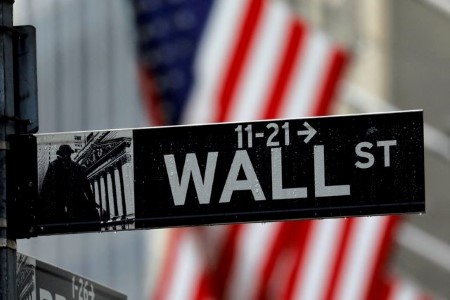




Philippines Trade Update: Trade trajectories trend along
 DOWNLOAD
DOWNLOAD

Policy Rate Updates: Double cut finale
 DOWNLOAD
DOWNLOAD

Monthly Economic Update: One for the road
 DOWNLOAD
DOWNLOAD


Skeptical on US stocks, equity hedge funds sit out market rally

NEW YORK, Aug 16 (Reuters) – Still uncertain on where US stocks are headed, equity hedge funds are sitting out the market rally despite taking big paper losses on bearish bets since June, according to industry executives and market data.
After slumping more than 20% during the first half on worries that aggressive US Federal Reserve rate hikes to tame inflation may cause a recession, the S&P has rebounded 17% since mid-June on signs prices may be stabilizing.
However, hedge funds have remained on the sidelines of the rally to assess more economic indicators before re-calibrating their portfolios, said prime broking executives and fund managers. Prime brokerages provide services to funds and big institutional clients.
In a sign of their dim view of the market, hedge funds are sitting on a record USD 107 billion worth of net short positions – or negative market bets – in S&P 500 futures, according to BNP Paribas calculations based on regulatory data from last week.
That skepticism among sophisticated investors with USD 1.1 trillion in assets globally suggests the rally could be short-lived, according to prime brokers.
“This is probably one of the most disliked rallies in the market across all client segments,” said a prime broker at a Wall Street bank, noting funds have been selling long positions into the rally. “The first week of August was one of our largest de-risking weeks we’ve seen in the last five years.”
Stocks are rallying largely because some investors believe the Fed will pull back on tightening monetary policy sooner than previously expected, although Fed officials are not promising that.
Not all bearish hedge funds have maintained their short positions, and some recent gains have likely been fueled by investors unwinding or “covering” those bearish bets, the people said. That process involves buying back stocks the funds had borrowed to sell short.
HEDGE FUND COVERING NOT A GREAT SIGN
“There was a lot of coverage by hedge funds while the market went up,” said Kris Kwait, chief market strategist at Commonfund, an asset manager which invests in hedge funds.
Kwait said the fact that hedge fund covering appeared to be driving the rally was “not a great sign” for its sustainability.
When the rally gained steam in July, hedge fund sales of long positions and purchases to cover short positions in non-essential consumer goods stocks, for example, were among the largest in the past five years, according to Goldman Sachs data.
Max Grinacoff, US equity and derivatives strategist at BNP Paribas, said short covering continued in August and last week in particular after Wednesday Consumer Price Index data suggesting inflation may have peaked sent stocks higher.
Since June 16, short sellers have suffered unrealized losses of USD 174 billion, although they are still up USD 162 billion in unrealized gains this year, according to financial analytics firm S3 Partners. Investors covered USD 45.5 billion of their short positions, according to S3.
Short interest has risen by 13.7%, or USD 126 billion, since then, mainly driven by sectors such as information technology, healthcare, industrials and consumer discretionary, S3 said in a report on Tuesday.
Equity positioning for institutional investors as a whole has crept up in recent weeks but remains in the 15th percentile of its range since January 2010, meaning it has only been lower 15% of the time over the past 12 years, according to an Aug. 13 note by Deutsche Bank analysts.
Due to macroeconomic uncertainties, hedge funds have significantly reduced their overall risk this year. Equity long-short hedge funds’ net leverage was 48% at the end of July compared with almost 70% in January, according to a Goldman Sachs’ report.
Hedge fund portfolio managers will likely reassess their strategies next month, when liquidity is set to increase as the summer break ends and more economic data is available, two prime broker executives said.
“Investors might still be bearish on the overall outlook,” said BNP Paribas’ Grinacoff. “But to the extent they’re getting caught offside, they may need to either cover or potentially participate in the upside rally.”
(Reporting by Carolina Mandl; Additional reporting by Saqib Ahmed and Alden Bentley; Editing by Michelle Price, David Holmes and Josie Kao)
This article originally appeared on reuters.com





 By Reuters
By Reuters